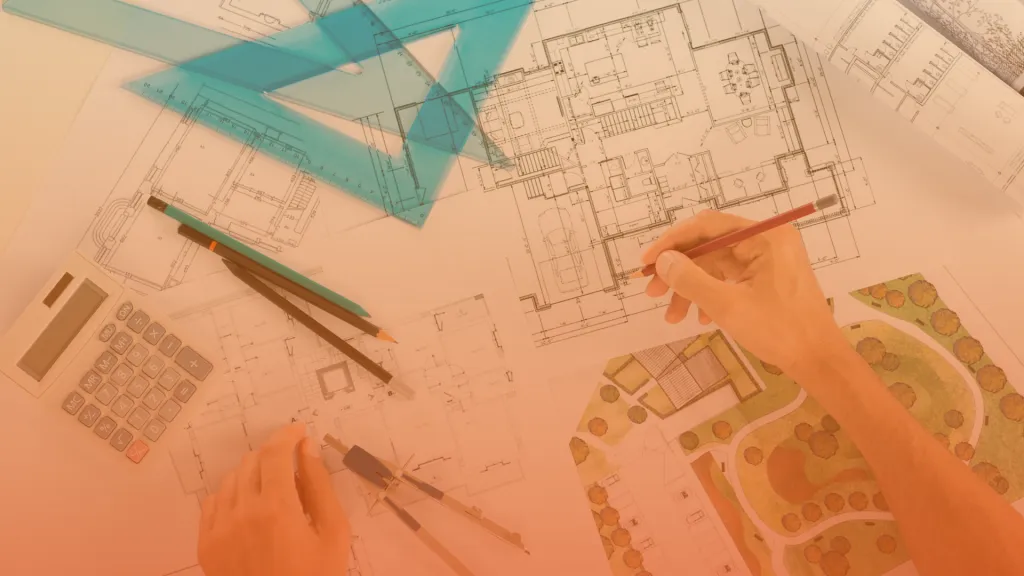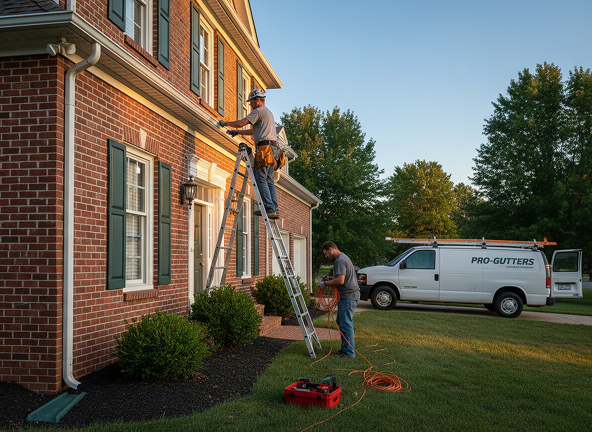Integrating CAD and Technology into Your Sales Process

Here’s why you should integrate CAD into your company’s sales process.
Consider the following scenario: you are a new homeowner. After a heavy rain, you realize that your basement has severe structural issues.
The concrete walls are damp, there’s a significant puddle in the corner, and worst of all, you have a crack running across the wall. You’ve been putting this work off some time now, but this is becoming a more and more pressing situation. You know foundation work is expensive, but something has to be done.
You call several foundation repair and basement waterproofing services to collect estimates. Each one sends their salespeople over. Your experience varies wildly depending on the company. Some of these guys barely interact with you; others spend three hours going over your problem, the company, and their product.
Regardless of your experience, the paperwork they usually leave behind or have you sign has a small drawing on it that looks something like this:

You don’t speak the industry jargon, so the symbols, line types, and proposed scope of work drawn here make little sense to you. Compared to some of the architectural drawings you’ve seen online, this chicken-scratch proposal looks very unprofessional and leaves you with a lot of unanswered questions.
You count on the company’s understanding of the situation and their experience and think to yourself: “hopefully, it will all work out.”
This experience is something that is common throughout the home improvement industry.
It’s a bad customer experience, but if you’re the salesperson in this scenario, you don’t want to spend hours drafting up a professional construction drawing. You’d rather be closing the sale, going to the next appointment, or drafting up the rest of the paperwork. But, a “chicken scratch” drawing can create a lot of issues.
Have you ever had any of the following happen to you after you left a customer’s house?
- You get phone calls from customers asking “what they’re looking at?”
- The team missed a measurement on the drawing and need to go back out to a prospective job site.
- A co-worker’s construction drawings are messy and illegible.
- Installers call you with questions about what work they need to do on a job.
- Your installers need to make many trips to job sites because they didn’t bring the right tools or materials with them.
And worst of all…
Your customer thought they agreed to a different scope of work based on their interpretation of your drawing. Oops.
The home improvement industry is difficult enough without these problems.
As a salesperson, you have to manage a busy schedule, meeting quotas, and overcoming the inherent distrust people have when dealing with an in-home salesperson. What’s needed is a creative way to address these issues while adding value to your business and improving your sales process.
Mobile, easy-to-use CAD (or Computer-Aided Design) is the simple answer. When most people think of CAD drawings, they think of software engineers or architects huddled over desktop computers.
This isn’t true anymore.
Advances in mobile technology have opened up the technology to both casual users and professionals. CAD is now utilized by both the contractor and the architect with the same level of skill. It’s becoming an essential tool for all residential contractors and their salespeople.
“People used to believe only a professional could do tiling or install track lighting. that’s utter nonsense.” – Home Depot founder Bernie Marcus.

Why is CAD important in your sales process?
Even if you’re not a part of the workforce, CAD has touched your life in profound ways.
Almost every manufactured product on the market today, from cars to cups, comes from a CAD program.
If you’re reading this on a computer, the mouse and keyboard you’re using to read this were first assembled as a series of shapes and lines on a computer. It is not an exaggeration to say that without CAD, the modern world as you know it today would not exist.
As a contractor or salesperson for a home improvement company, you can stand out from your competition by using this technology.
According to a JB knowledge survey conducted in the construction industry last year:
Only 11% of general contractors are using wearable technology, like tablets or smart-watches. [JBK]
Only 24% of construction employees are “very comfortable” with new technology. [JBK]
Without mobile CAD, contractors will:
- Measure a job site, make crude (i.e. “chicken-scratch) drawings while walking around a potential job site,
- Drive back to the office,
- then make a more refined copy of that drawing back in the office to present to a customer.
Measurements then need to be tallied and run through a series of calculations with or without the help of software to determine the cost of the job. This process creates unnecessary redundancy and room for human error. When information is being manually entered or copied from one sheet of paper to another, it can get lost, misplaced, or entered inaccurately.
Worst of all, these issues compound once the job has been sold and moved onto installation. Unnecessary phone calls, return trips to job sites, and frustrated customers can often be traced to poor coordination and human error.
CAD, if used correctly, can solve these problems at the source–when the initial measure was first completed and plans drawn up by the salesperson. By utilizing CAD, you can provide your customers with a professional drawing and estimate, without ever leaving the job site.

How Computer-Aided Design (CAD) can help your business and its sales process
Mobile CAD programs like ArcSite allow users to:
- Quickly draw up floor plans and job sites to scale
- Integrate marked-up photos directly into the drawing
- Create a bill of materials and a customer proposal as the drawing is created.
- Help or completely price out a job
- Share drawings between co-workers with the press of a button
- Instantly recall drawings created years ago.
Mobile CAD programs can range from basic sketching programs to more advanced 3D software. These programs allow users to produce professional drawings and to render complicated structures.
Home improvement sales and marketing organizations are rapidly adopting this kind of software to complement their sales process. By removing the need to outsource CAD work to expensive third parties, mobile CAD apps are being integrated into sales processes.
Utilizing these programs in your sales process results in some of the following benefits:
Less negotiation and a higher close rate
Depending on the CAD solution you select, the program may be able to use a function called “takeoff” to generate a price and bill of materials. Programs like ArcSite take this one step further and generate a customer proposal in-app.
Lines and shapes aren’t merely graphics to a program like this; they stand for pillars, beams, piers, and concrete. ArcSite uses that data to calculate a price to your specifications.
In other words, if you can show a customer why a price is what it is using an automated process, they’ll be more inclined to sign paperwork on the spot. There is a world of difference between a computer telling you what an object costs and salesperson doing the same thing. Ask any car salesman in the modern age who tries to sell a prospect armed with a quote from Kelly Blue Book.
Consistency between sales rep’s drawings
Strictly from a management perspective, mobile CAD has a completely different set of benefits.
Enforcing CAD use among sales reps ensure that drawings are all legible and use a shared set of line types, fonts, and symbols. This level of control is impossible to maintain with “chicken-scratch” drawings.
In addition, the nature of CAD means it is impossible to draw a structure accurately without completing some form of initial measure. You’ll find that reps won’t miss nearly as much once they start using CAD software, the drawings will always be to scale and perfectly legible. Regardless of handwriting, CAD funnels everyone through the same software and delivers the same output: clean, legible drawings, every time.
This makes managing multiple projects from different reps much simpler. With complete parity, there’s much less room for miscommunication.
Fewer return trips to job sites
Combining a mobile CAD solution with photos taken on-site from the same device ensures that your installation crew comes armed with as much knowledge as possible. They’ll have everything they need to prepare and install a job. Showing these CAD drawings to the customer also helps create a shared set of expectations between them and the people doing the work.
This helps reduce the number of trips taken to change something that wasn’t installed to the customer’s expectations. At ArcSite, we’ve found that effectively using CAD can cut return trips to job sites in half.
More “Wowed” Customers
Customers are very impressed when they see a sales rep creating a CAD drawing on a mobile device at their home. Generally speaking, customers do not expect CAD drawings to be created on-site by a sales rep.
By showing a customer that you are using cutting edge technology, you are positioning yourself as a leader in the industry. You’re also looking much better than “Chuck in a truck” who pulled up and pieced together a construction drawing with a pencil and paper.
If you’re not using CAD, you might as well be a Chuck.

Finding the best mobile CAD program for your sales process
Contractors and salesman in the home improvement industry are busy people. If you’re like most, 10-12 hour days are commonplace.
You’re managing a pipeline of new leads, following up with existing prospects, and overseeing the installation of jobs you sold. In the midst of this organized chaos, trying to adopt a new sales process or technology can seem like an insurmountable challenge. That transition can be as seamless as possible. It’s easier than you think, and once you have it in hand you’ll reap the benefits for years to come.
But, there’s a good possibility that you are not the final decision maker in your organization. Management in the construction industry is often overworked. The responsibility can fall to people with the initiative to find creative solutions to their problems.
This is where you come in.
Assuming you are the point man for this project, let’s move into how to find the right mobile CAD solution for your home improvement company.
Don’t try to create a CAD solution yourself.
Depending on your level of experience with software, you may or may not take this first point for granted.
When facing a challenge requiring creative thinking, it can be tempting to take complete ownership over the process. Several companies we’ve approached have tried tackling the software development aspect themselves. This can seem like a profitable endeavor at first, but the reality of the situation will manifest if you start down this road. It can take years to bring together the right team, and hiring a small team of software engineers will cost hundreds of thousands of dollars.
Even AutoCAD, the largest CAD company in the world has developed and released hundreds of products that have failed. Needless to say, undertaking software development while trying to run or work in a construction company is difficult.
Dare I say, impossible.
We’ve also seen plenty of small contractors try to use familiar programs in an attempt to emulate CAD drawings. We’ve seen everything from PowerPoint, Google Docs, to Excel. While these programs come with most computers, they do not solve the problems you are looking to address. It’s important to have software in-hand that is designed for your business. That will make teaching and using it easier for everyone involved.
We applaud innovation, but trying to fit a square peg into a round hole is the wrong approach.
Find a program that’s easy to use and easy to teach.
CAD programs, generally speaking, are going to fit into two categories for your use case as a home improvement expert. They’re either going to do too much, or they’re going to do far too little. Have a goldilocks mindset and find a CAD program that’s “just right” for your business.
Traditional CAD programs are going to fall into the first category of being “too big” and doing way too much. Many CAD programs you’ve likely heard of before are perfect for rendering 3D models or for designing houses.
These are best utilized by professionals in their associated industries. Learning how to use them can require hours in the classroom or years of on the job design experience. If you’re hiring out your CAD designs, odds are those folks are using some of those sophisticated programs. They probably do too much and have a host of features you don’t need, nor want to pay for. If you have to take a class to learn it, it’s not going to be usable across the board in your home improvement business.
Most free CAD software is going to do far too little.
There are several programs available on the App Store that allow you to draw straight lines on something resembling graph paper. But, the interfaces are clunky and there’s very little technical sophistication to the app. Something as simple as drawing to scale and showing dimensions on-screen is not available on most of those programs. Free applications are primarily designed for hobbyists or casual users and will not be appropriate to your use case.
Try to find a program that offers the best balance between technical nuance and ease-of-use. Keep in mind that you will likely have to teach others how to use the program as well, so try to find something that’s very intuitive. If you’re struggling to figure out how to draw a line in the program, you’re probably not looking at the right one.
Download several apps, sit through a demo with an experienced user, and then make a decision that feels right for you.
Look for a software company with experience in your industry.
CAD applications are designed by software engineers, not home improvement contractors or salespeople. Due to the gap between the creators and the users, it’s important to look for some common ground. That way you can connect with to ensure you have a good fit for your business.
Ask yourself these following questions when reviewing applications:
- Was this program designed for people in my general industry?
- What features have this company developed to help complement or improve my workflow?
- Does their staff fully understand my workflow and how their product fits into it?
Having at least one point of contact at the CAD company who’s developed the software generally makes your life easier. Not only will this person understand how you’re using their software, but they’ll also understand why. You’ll find that person to be helpful in onboarding your team and pointing out features in the software you may not have been immediately aware of.
Choose a subscription-based service.
Software subscriptions are a double-edged sword. On one hand, you typically pay less for the software upfront. On the other hand, a subscription typically requires a longer-term investment.
While we may be biased, we would recommend a subscription-based service like ArcSite for several important reasons:
1. You’ll have access to all future updates and bug fixes as part of your subscription.
I’ve often found that contractors tend to be a little old-fashioned when it comes to software and would rather pay a large up-front fee to buy the software outright rather than take out a subscription.
While it may be tempting to think that making a one-time purchase for a CAD application will be a permanent solution, the reality is far different. All software requires continual updates and support to keep the program running.
These software companies have to release additional editions of the same program to pay for ongoing development. As a customer, you may need to buy those when your existing version goes out of date or no longer meets your needs.
So, while a subscription may require payments at set intervals, you never need to worry about the software expiring or being out of date. You’ll always know exactly what you need to budget for as well.
It’s a worry-free investment that pays in time saved and more deals closed.
2. An emphasis on customer service and ongoing support.
SaaS businesses (Software as a Service) rely on continued monthly or annual subscriptions to stay afloat. Due to the processes inherent in this business model, the software is only one component of their product.
Customer service is just as important. SaaS companies will be more incentivized to provide services like:
- Onboarding (training) services for new users at your business as they come in.
- Hands-on support when it comes to learning new features.
- Much needed customer support when you run into an issue.
- Developing new features to further address your “pain points” or difficulties on the job. These come from listening to their existing customers.
SaaS companies will often focus on the needs of existing customers over potential clients due to the nature of their business. As a rule, keeping your existing clients happy costs less than acquiring new ones.
As a customer, this means you’ll have much-needed access to customer support. There’s always going to be someone to pick up the phone when you call. Software that you purchased once from a company is going to be much harder to get any form of customer service.
3. Easier to scale
A unique advantage of subscription-based software is that it is typically cloud-based. This means that adding new users to your network is as simple as adding an account.
Let’s say your growth requires additional resources and you need to hire more employees. Rather than purchasing individual software packages for each employee, you can simply upgrade your subscription to include more users. This allows new employees to seamlessly transition into your business and keeps everyone in the same workflow.

The tools you’ll need for your project estimation and sales process
Along with the correct mobile CAD application, you’ll need to make sure that you are equipped with the right equipment and tools to implement your new sales process. You’ll need a combination of hardware, accessories, and maybe a printer to go along with your powerful mobile CAD software.
Hardware
As a salesperson or contractor, mobility should be a top consideration when deciding what kind of hardware to use for CAD.
Working in home improvement sales requires walking around a house, taking measurements, and conversing with a homeowner all at the same time. While desktop computers and laptops are more familiar to most people in this industry, the sheer convenience of being able to input data and take photos while walking around the home gives the advantage to tablets.
Due to the popularity of smartphones, most salespeople and contractors will find the transition seamless enough even if they’ve never used them before.
Accessories
Accessories are as important as the tablet itself when picking up hardware.
Consider investing in a sturdy case and a shoulder strap for your tablet. This will keep the device strapped onto your body, protect it from the elements, and also help prevent damage due to slips and falls.
If you have large fingers, you’ll also want a stylus. ArcSite comes with an Apple Pencil mode you can turn on in settings. If you do buy a stylus, make sure the case you buy has a place for the stylus.
Printer
Also, consider investing in a mobile printer if your company makes the move to mobile CAD. You’ll be able to print off whatever construction drawing you’ve made on-site and leave them with a customer. If you’re using a proposal generation feature, such as ArcSite’s, you’ll also be able to print off a ready-to-sign proposal from the convenience of your car.
Mind the heat: some printers will not work if it’s too hot in the vehicle. You’ll want to do some cursory research on the range of temperatures the device will work well in before buying one. This information is not always on the box of the printer and may require a phone call to the manufacturer.
How do you get started?
We would love to help you find the best solution to help integrate CAD and technology into your sales process. Gone are the days of pen and paper, and for good reason.
ArcSite is a great solution for many industries that use in-home sales to sell their services. We’d love to talk to you and learn more about what your business needs.
Send us a message and we’ll be in touch!
Categories
INDUSTRY
FAQs
Related posts
Not quite ready for a demo? Start a free 14-day trial of ArcSite with no credit card required!
Available on iOS, Android, and Windows devices.























